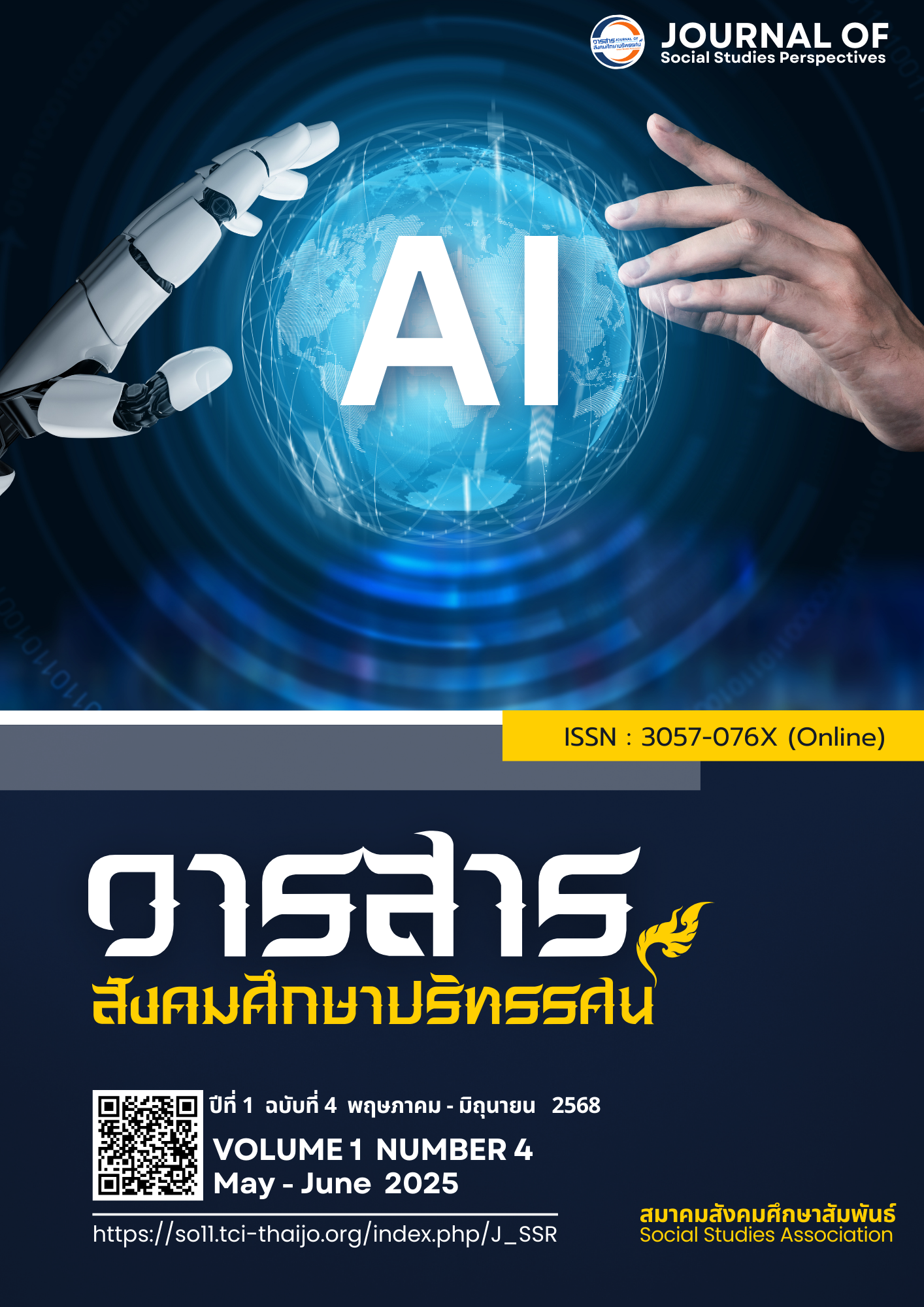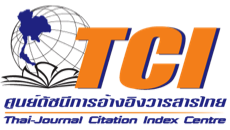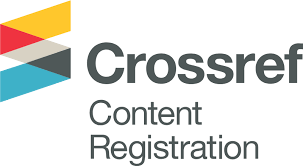SATISFACTION OF UNDERGRADUATE TOWARD GENERAL EDUCATION PEOGRAM OF CHALERMKANCHANA UNIVERSISTY
DOI:
https://doi.org/10.64186/jsp1917Keywords:
Satisfaction, Undergraduate , Teaching management, General education subjectsAbstract
This research aims 1) to study student satisfaction towards the teaching of general education courses of the undergraduate program at Chalermkarnchana University, Nakhon Si Thammarat, and 2) to compare student satisfaction towards the teaching of general education courses of the undergraduate program at Chalermkarnchana University, Nakhon Si Thammarat, classified by the students' general data. This research was quantitative research by applying Maslow's (1970) satisfaction concept with Somphong & Petdeeton's (2019) satisfaction measurement concept as the research framework. The sample group was 335 1st-2nd year students in the 2nd semester of the academic year 2023, obtained by using stratified probability sampling, proportional sampling, and simple cluster sampling. The research instrument was a 5-level rating scale questionnaire. The data were analyzed using frequency, percentage, mean, standard deviation, and hypothesis testing using the Independent t-test, One-Way ANOVA, and Scheffe's pairwise difference test. The results of the research found that:
- The students' satisfaction with the general education courses was found to be at a high level overall (
= 4.54, S.D.
= 0.32). The satisfaction levels in various areas were ranked as follows: Curriculum (
= 4.62, S.D.
= 0.36), Buildings, teaching media, and equipment (
= 4.57, S.D.
= 0.51), Teaching activities (
= 4.56, S.D.
= 0.40), Assessment and evaluation (
= 4.52, S.D.
= 0.47), Faculty members (
= 4.51, S.D. = 0.50), and Teaching methods (
= 4.49, S.D.
= 0.42) respectively.
- The students' satisfaction with the general education courses, classified by demographic information, showed significant statistical differences at the 0.01 level. Students from different faculties and academic programs had varying levels of satisfaction, with students from the Faculty of Business Administration expressing the highest satisfaction. However, there were no significant differences in satisfaction based on gender or academic performance. The findings of this study can be used to improve and enhance the general education curriculum and teaching methods to better meet students' needs and increase the overall effectiveness of education.
References
Boonmee, W. (2021). Teaching media and learning in the 21st century. Journal of Legal Entity
Management and Local Innovation, 7(9), 374-386.
Juithong, S. (2019). THE UNDERGRADUATE OF SATISFACTION TOWARD STUDY PRODUCTIVITYBASED LEARNING ACTIVITIES THE COURSE PRINCIPLES OF LEARNING MANAGEMENT UNDER GREADUATE FACULTY OF VALAYA ALONGKORN RAJABHAT
UNIVERSITY UNDER THE ROYAL PATRONAGE. Valaya Alongkorn Review Journal (Humanities and Social Sciences), 9(1), Jan
uary-April 2019.
Khamwisettanaton, K. (2021). A study of students’ satisfaction toward the master of education major in curriculum and instruction of Rajabhat Mahasarakham University. Sarakham Journal, 12(2), 46-70.
Khomthida, S. (2025, February 11). Student opinions on the teaching management at the associate degree level at Uthai Thani Community College. http://thesis.swu.ac.th/ Research Article
Likert, R. (1967). “The Method of Constructing and Attitude Scale,” in Attitude Theory and Measurement. New York: Wiley & Son.
Masard, P. (2023). The Development of an Instructional Model to Enhance Competency Focusing on Thai Language Communications of General Educational Courses for Undergraduate Students. Journal of Interdisciplinary Research, 12(1), 218-229.
Maslow, A. H. (1970). Motivation and Personality. New York: Harper and Row.
Ministry of Higher Education, Science, Research and Innovation. (2025, April 4). Annual Report 2022 of the Ministry of Higher Education, Science, Research and Innovation. https://shorturl.at/VNmwJ/ Thai Higher Education in 2012-2016
Office of the Education Council. (2017). National Education Plan 2017-2036. Bangkok: Prikwan Graphic Co., Ltd.
Office of the Higher Education Commission. (2009). Guidelines for Implementation of the National Qualifications Framework for Higher Education in Thailand (2009). Bangkok.
Pasukree, T. (2019). ENVIRONMENT CONDUCIVE TO LEARNING OF STUDENTS IN TANGPIRUNDHAM SCHOOL UNDER THAWI WATHANA DISTRITC OFFICE, BANGKOK METROPOLITAN. Journal of MCU Nakhondhat, 9(3), 80-93.
Phasukorn, T. (2019). Creating an environment conducive to learning for Undergraduate at Setphirun Tham School, Office of Thawi Watthana District, Bangkok. Research article Pathum Thani University, 9(3), 79-93.
Sangsavang, J. & Rachprakhon, P. (2019). A study of factors related to the decision-making behavior of purchasing chemical fertilizers of farmers in Kanlueang Subdistrict, Nang Rong District, Buriram Province. The 9th National Academic Conference of Rajamangala University of Technology Isan. Surin Campus.
Sirirattanajitt, A. (2021). Satisfaction in teaching and learning styles in general education with
the management of general education courses that enhance 21st century skills of undergraduate in 5-year teacher programs in higher education institutions in Songkhla Province. The 12th Hatyai National and International Conference. Hatyai University.
Siriyom, M., & Phoothong, D. (2015). A Study of Learning in 8 Courses of “General Education in Thai Qualifications Framework for Higher Education of Students” in Pathumthani Province. North Bangkok University.
Somphong P., & Petdeeton, N. (2019). Student satisfaction with teaching management of the
General Education Institute, Khon Kaen University. Journal of PKMUTT, 8(1), 23-32.
Srisa-ard, B. (2017). Preliminary research. 10th printing. Bangkok: Suwiriyasan Company Limited.
Walaulak University. (2025, April 4). General Education Program. https://shorturl.at/sUf27.
Yamane, T. (1973). Statistics : An Introductory Analysis (2rd ed). New York: Harper and Row.
Downloads
Published
How to Cite
Issue
Section
Categories
License
Copyright (c) 2025 Journal of social studies perspectives

This work is licensed under a Creative Commons Attribution-NonCommercial-NoDerivatives 4.0 International License.
The article is published under the Creative Commons Attribution-NonCommercial-NoDerivatives 4.0 International (CC BY-NC-ND 4.0) license, which allows others to share the article while giving appropriate credit to the author. It prohibits the use of the article for commercial purposes or the creation of derivative works. Any other reuse or reproduction requires permission from the journal.









